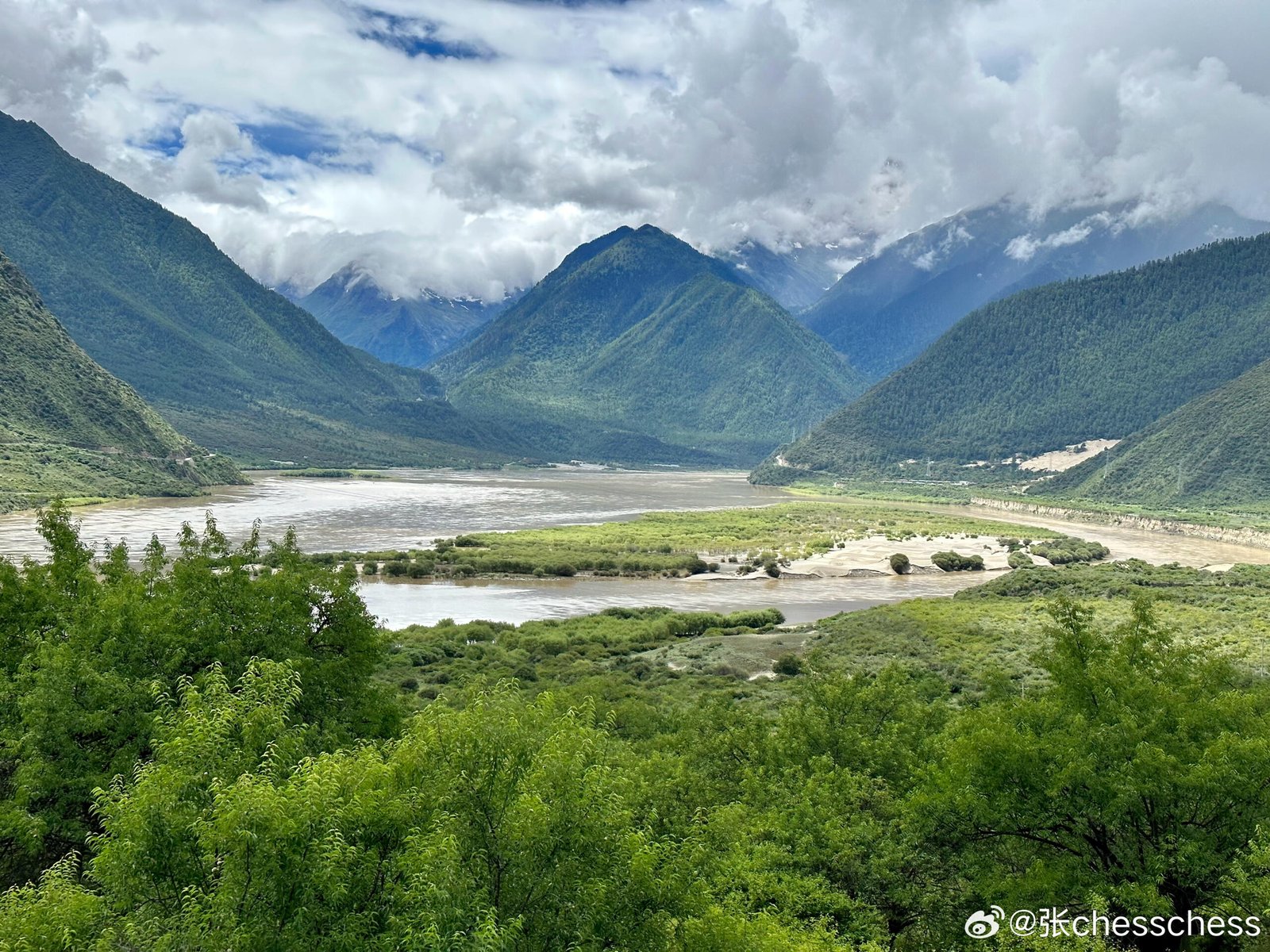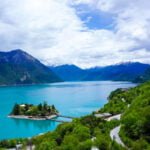Nestled in the enchanting landscapes of Nyingchi, Tibet, the Nyang River, meaning “Fairy’s Tears” in Tibetan, weaves a tale of beauty and lore. According to legend, a goddess from Mount Bonri wept tears of joy upon witnessing the lush valleys and breathtaking scenery, giving birth to this magical river.
A River Born of Legend
The story goes that the goddess’ tears flowed down her jade hairpin, transforming instantly into a stream, hence the name Nyang River. Later, when the goddess fell in love with a brave young man, they transformed into cranes to escape her father’s wrath. It’s said that on New Year’s Eve, the lovers return, blessing those who hear their calls or drink the river’s waters with a year of good fortune and happiness.
The Nyang River, also known as “Nyang Chu” or “Jiangda River,” originates from the glacial lakes surrounded by the peaks of the Nyenchen Tanglha Mountains. The river runs through a diverse landscape, from dense subalpine forests to wide, open valleys, before merging with the Yarlung Tsangpo River. Spanning 308.5 kilometers and dropping 2580 meters, its waters nourish a rich tapestry of ecosystems along its course.
Natural Splendor Along the Nyang
The river’s journey is framed by the lush forests of pine and ancient cypress, sandy beaches, and verdant grasslands. Traditional villages and modern towns dot its banks, offering glimpses into the region’s culture and history. Renowned for its clear waters, peculiar peaks, ancient villages, and beautiful forests, the Nyang River is a testament to the rugged beauty of southeastern Tibet.
Tips for Your Visit
- Reverse Water Flow Phenomenon: Where the Nyang meets the Yarlung Tsangpo, the clearer, faster Nyang waters push into the murkier, slower-moving waters of the Yarlung Tsangpo, creating a stunning reverse flow spectacle.
- Central Pillar Rock: Visible from afar after crossing the Mila Mountain from Lhasa, a giant stone stands in the river, known as the “Central Pillar.” Local lore holds it as the seat of the guardian deity of Gongbu, and it serves as a prime location for photography enthusiasts.
The Nyang River, with its tales of gods and love, lush landscapes, and cultural richness, invites travelers to witness the serene beauty and mystical charm of Tibet’s southeastern green oasis.















